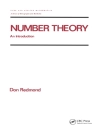Fifty years ago Claude Chevalley revolutionized Lie theory by pub- lishing his classic Theory of Lie Groups I. Before his book Lie theory was a mixture of local and global results. As Chevalley put it, "This limitation was probably necessary as long as general topology was not yet sufficiently well elaborated to provide a solid base for a theory in the large. These days are now passed:’ Indeed, they are passed because Chevalley’s book changed matters. Chevalley made global Lie groups into the primary objects of study. In his third and fourth chapters he introduced the global notion of ana- lytic subgroup, so that Lie subalgebras corresponded exactly to analytic subgroups. This correspondence is now taken as absolutely standard, and any introduction to general Lie groups has to have it at its core. Nowadays "local Lie groups" are a thing of the past; they arise only at one point in the development, and only until Chevalley’s results have been stated and have eliminated the need for the local theory. But where does the theory go from this point? Fifty years after Cheval- ley’s book, there are clear topics: E. Cartan’s completion of W. Killing’s work on classifying complex semisimple Lie algebras, the treatment of finite-dimensional representations of complex semisimple Lie algebras and compact Lie groups by Cartan and H. Weyl, the structure theory begun by Cartan for real semisimple Lie algebras and Lie groups, and harmonic analysis in the setting of semisimple groups as begun by Cartan and Weyl.
Anthony W. Knapp
Lie Groups Beyond an Introduction [PDF ebook]
Lie Groups Beyond an Introduction [PDF ebook]
Beli ebook ini dan dapatkan 1 lagi PERCUMA!
Bahasa Inggeris ● Format PDF ● ISBN 9781475724530 ● Penerbit Birkhauser Boston ● Diterbitkan 2013 ● Muat turun 3 kali ● Mata wang EUR ● ID 4756803 ● Salin perlindungan Adobe DRM
Memerlukan pembaca ebook yang mampu DRM












